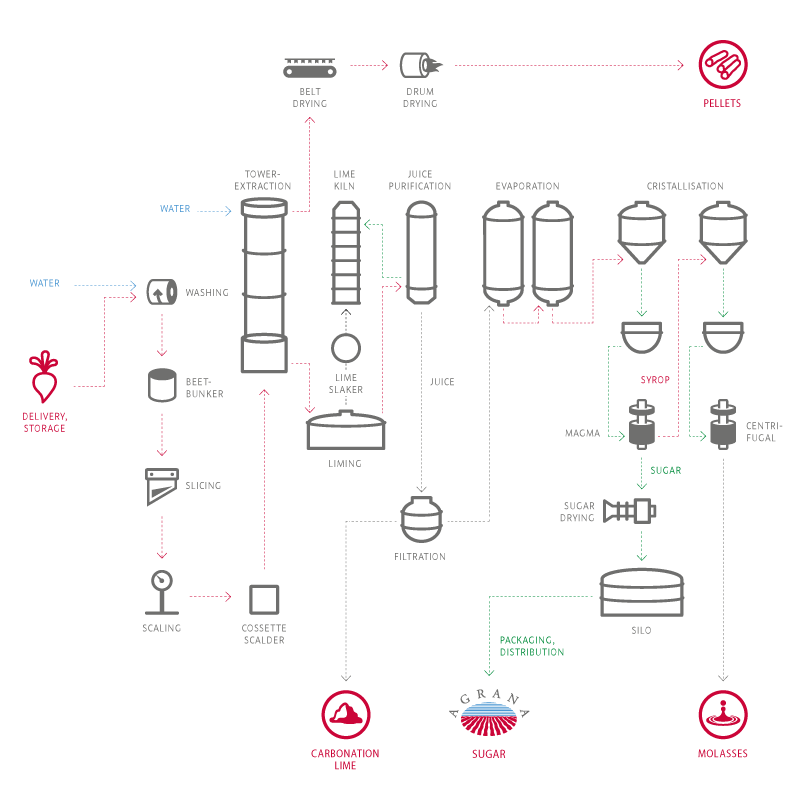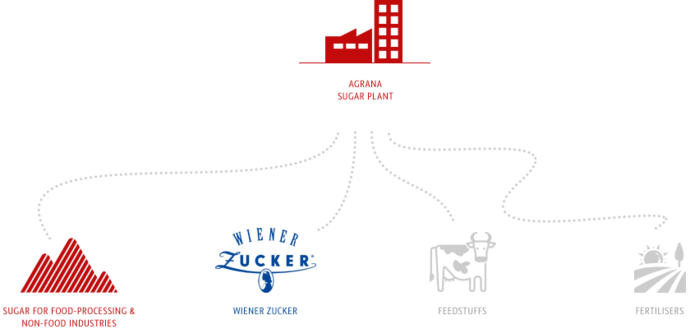The sugar beet acreage of the approximately 5,700 AGRANA contract farmers (previous year: about 5,500 farmers) in the 2024 crop year was about 99,000 hectares, a significant increase from the prior crop year’s 86,000 hectares. Growing conditions in 2024 were characterised by favourable weather in spring and dry summer months. The second half of the growing season was marked by a September of exceptionally heavy rain. A period of dry, cold weather followed from mid-October.
As a result of the challenging weather conditions – extreme heat followed by record rainfall – Cercospora leaf disease was more prevalent than in the previous years. Even varieties resistant to leaf disease suffered considerable loss of leaf area, resulting in regrowth that reduced the sugar content of the beets, which fell to a historic low.
The occurrence of beet weevil was largely brought under control, thanks to a seed treatment applied under an emergency authorisation, and caused only a minor loss of acreage. However, the incidence of beet rot increased, particularly in the eastern growing regions: Exacerbated by high temperatures and low rainfall, diseases such as stolbur and rubbery taproot disease proliferated, which cause beet rot and are transmitted by various species of plant hopper.
The growing conditions described were the key reason for a mean sugar content of only 14.6% (previous year: 16.2%), well below the multi-year average. Around 6.5 million tonnes of sugar beet (previous year: 5.7 million tonnes) were harvested from a total area of about 97,000 hectares, corresponding to a steady average yield of 67 tonnes per hectare (previous year: 67 tonnes per hectare).
AGRANA’s seven beet sugar factories processed a combined daily average of slightly more than 48,400 tonnes of beet during the campaign (previous year: 48,200 tonnes). Thanks to the higher beet quantity, the factories produced a total of 816,000 tonnes of conventional sugar (previous year: 806,000 tonnes), in a campaign averaging 136 days in length (previous year: 119 days). Additionally, at the plant in Hrušovany, Czech Republic, about 4,100 tonnes of organic sugar were produced in an 11-day separate organic campaign. As a result of the Sugar segment’s total beet processing volume, the average capacity utilisation of the sugar factories was 113% (previous year: 99%).
At the plant in Tulln, Austria, a molasses desugarisation facility was operated year-round. In addition to thick juice and liquid betaine, it produced fertiliser molasses. AGRANA also operates two raw cane sugar refineries, in Bosnia and Herzegovina and in Romania; in the 2024|25 financial year, these produced a total of about 73,000 tonnes of white sugar (previous year: about 286,000 tonnes).












